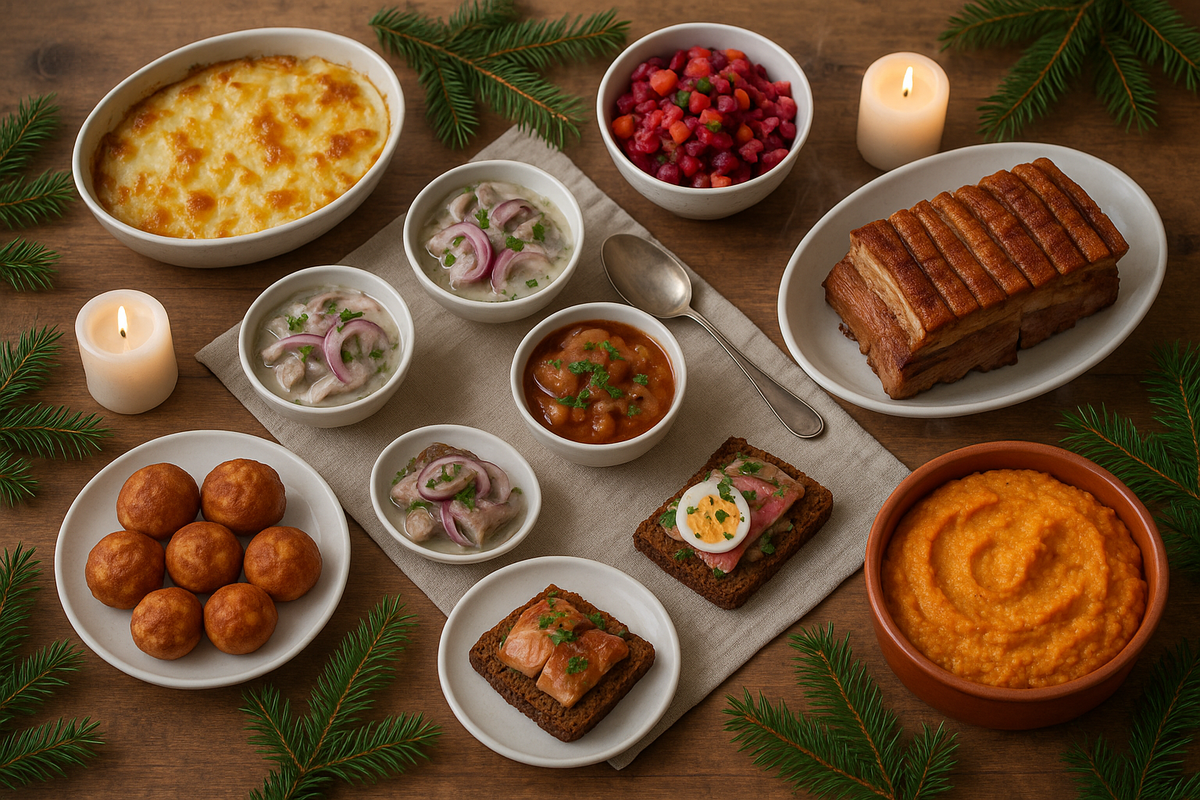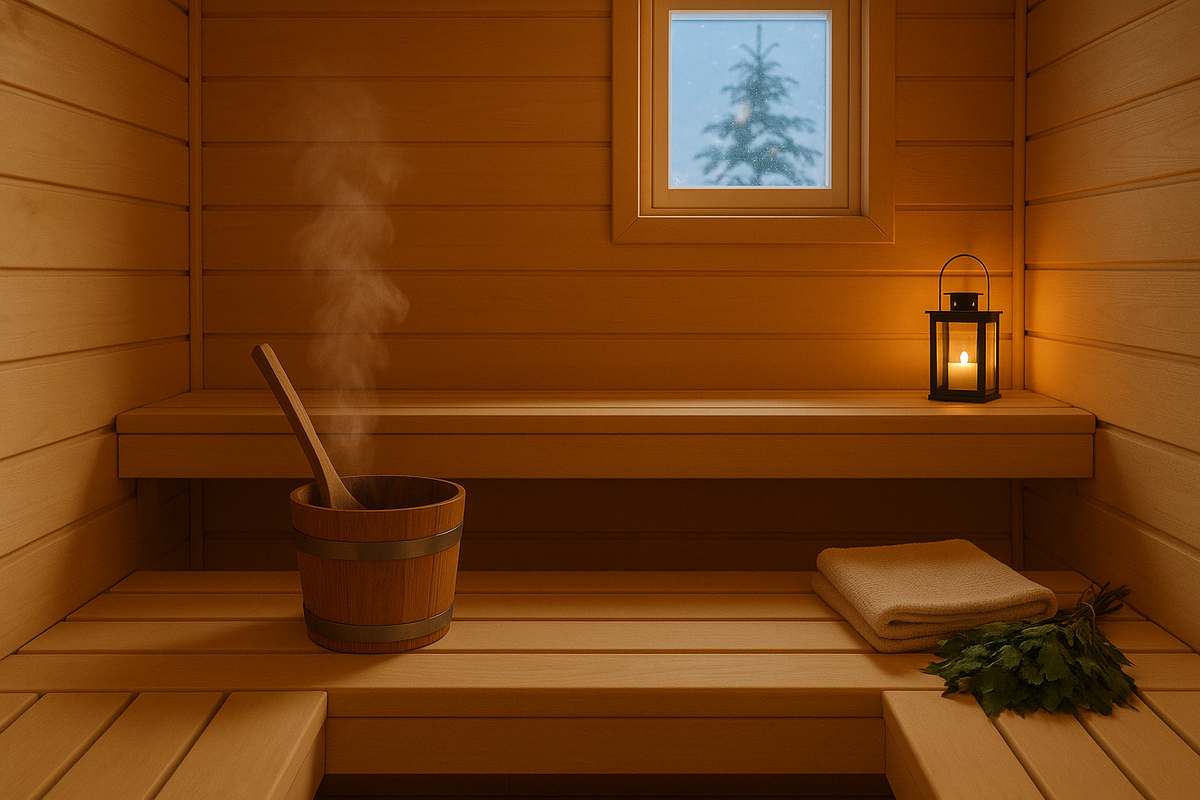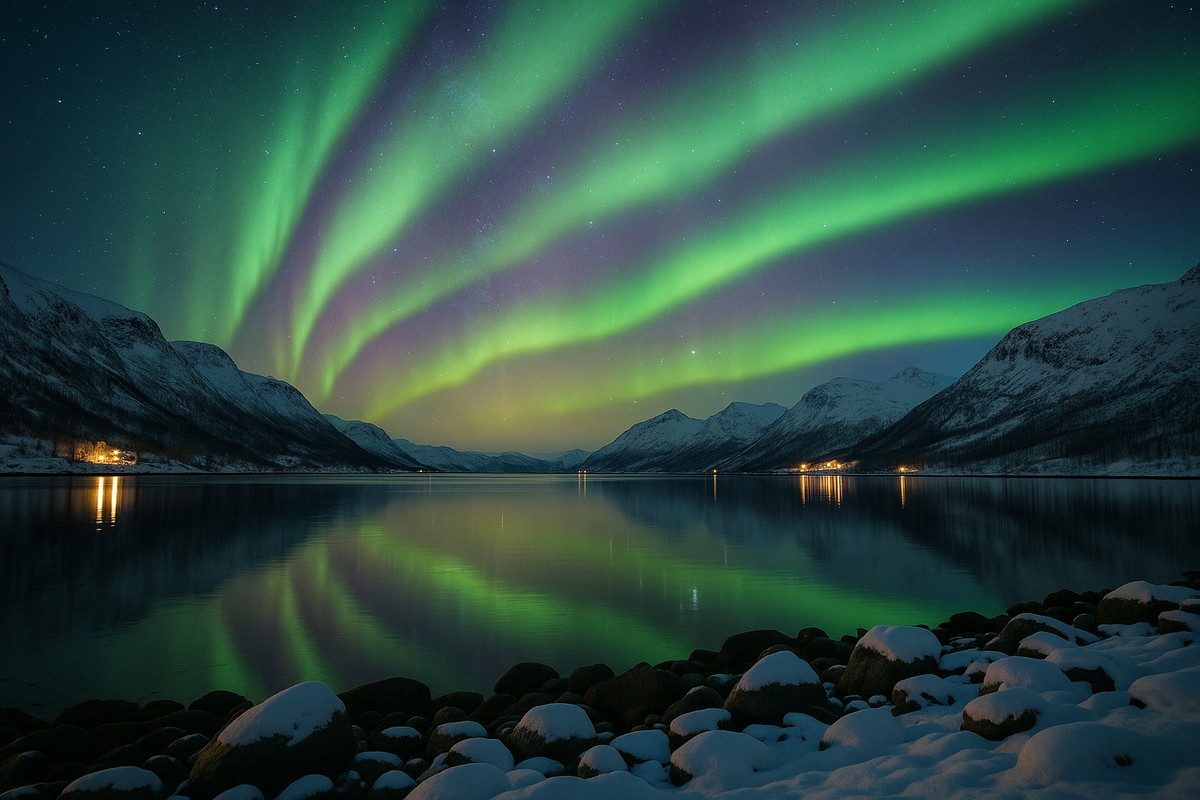❄️ Scandinavian winter: how winter holidays in Norway differ from those in Sweden, Denmark and Finland
✨ Four winters — four temperaments
In Scandinavia, Christmas is celebrated on 24 December in the evening — at home, by candlelight, with warm food and long conversations. But each country has its own winter.
Norway is about fjords, mountains, the northern lights and intimate julebord.
Sweden is about the light of Lucia and the generous julbord.
Denmark is about hygge, Tivoli, buns and gløgg by the water.
Finland is about saunas on Christmas Eve, Joulupukki and the reliable snow of Lapland.
The lower down the list, the more specific the information: where to go, when to go, what to expect in terms of atmosphere and budget.
High‑demand calendar
| Date | Event / reason | Area | Uplift | Tip |
|---|
🕯️ Lucia (13 December): what it looks like — and how to ‘hear’ the holiday
Sweden. The morning of 13 December begins with a song. Girls in white dresses and Lucia with a wreath of candles on her head walk in a slow procession; Santa Lucia plays, and the smell of saffron fills the air — it's lussekatter (yellow buns) and coffee. In Stockholm, the processions take place in old interiors and squares; in the evening, there are choir concerts. This is not a show, but a ritual of light in the shortest month. Come 30-40 minutes early: the sound and photos are better in the front row.

Finland. In Helsinki, the coronation of Lucia is a celebration of voice, light and snow. The procession takes place in the city centre: the lights on the facades, the glistening frost — a pure ‘northern fairy tale’.
Norway and Denmark. Intimate school/parish processions; in Copenhagen — Lucia on the water: kayaks with garlands glide along the canal, and for the first time this winter, we realise how much ‘warmth’ water + lights can give.
🍽️ Julebord, Julbord, Julefrokost, Pikkujoulut: four formats of one idea

Norway — Julebord. Dinner party: pinnekjøtt, ribbe, aquavit, conversations about ‘the end of the year.’ The rhythm is intimate — more table and conversation than dancing.
- Sweden — Julbord. A large buffet with history: herring ‘in five marinades’, salmon, köttbullar, Janssons frestelse, ham, sweets. It's not just food, it's family memory.
- Denmark — Julefrokost. Often during the day: smørrebrød and hot food later, gløgg and æbleskiver. The format is simpler in appearance, but very ‘human’.
- Finland — Pikkujoulut. ‘Little Christmases’: December parties from offices to clubs; sometimes with a sauna — steam, snow and hot drinks — the perfect triptych.
🧖♀️ Sauna on Christmas Eve (Finland): why do it
In Finland, on 24 December, many people go to the sauna. It is purification and attunement: short visits, water in between, mindfulness. Afterwards — a candlelit dinner, silence and loved ones at the table. If you are a tourist, the code is simple: respect the ritual, keep your voice down, no phones in the steam room, and wear warm clothes when you leave.

🎄 Markets and lights: how capitals and their ‘pairs’ ‘breathe’
- Copenhagen. Tivoli is a universe unto itself: illuminations, carousels, gløgg, desserts. Around the city are pockets of light: courtyards, embankments, the ‘second line’ of coffee streets without markups and crowds. At dusk, the lights give a soft volume — the best window for a walk.
- Stockholm. Gamla stan is a picture-perfect old town; Skansen offers crafts, songs and dances; in the Djurgården area, there are halls for a ‘warm break’. On weekends, there are local markets with lots of locals and little rush.
- Oslo and Bergen. In Oslo, there are cosy rows at Spikersuppa (the skating rink between Karl Johans gate and the theatre) and Aker Brygge/Tjuvholmen by the water. Bergen is wet and very atmospheric: mountains, reflections, and most importantly, Pepperkakebyen, the ‘gingerbread town’ — children get to know the neighbourhoods, adults get to know their area.
- Helsinki. The geometry of lights and designer rows, Senate Square and the ‘Thomas Market’. The wind is a factor: plan warm breaks every 45-60 minutes.
📺 Family rituals and ‘television’ traditions
- Sweden: On 24 December at 3 p.m., many families watch the Christmas episode of Kalle Anka (Donald Duck) together — ‘one room, one screen, one blanket.’ This is not a meme, but a real family scene.
- Denmark: the Queen's speech on 31 December at 6 p.m. — the ‘gathering point’ of the evening. Afterwards — dinner and a trip to the water.
- Norway: the King's New Year's address on the evening of 31 December — a calm tone and a sense of completion.
- Finland: presidential address on New Year's Day; 24 December at noon, Turku proclaims ‘Christmas peace’ — a few minutes of silence in the square, followed by a family evening.
🎅 Santa and the ‘little guardians’: Joulupukki, Julenissen, Julemanden, Tomten/Tonttu
- Finland — Joulupukki. Letters, meetings, parks and master classes — it's a whole industry of children's dreams. In Lapland, encounters with Santa Claus feel organic: snow, sleighs, lights.
- Norway — Julenissen, Sweden — Tomten, Denmark — Julemanden. All countries are home to nisse/tonttu — ‘little guardians of the house/farm’: they are fed porridge, and in return, they are expected to bring help and good luck. A traditional game is pakkeleg: in Denmark — pakkeleg, in Norway — pakkelek, in Sweden — julklappsspelet (in the exchange of gifts, it is the game that is important, not the price).
- ‘Almond surprise’. In Denmark (and partly in Finland), almonds are hidden in rice pudding: whoever finds them receives a mandelgave (small gift) and the right to boast until next Christmas.
🧁 Festive table: how it is served and why ‘taste = memory’
- Norway: pinnekjøtt (ribs, often ‘smoked’), ribbe (with a perfect crust), lutefisk — for connoisseurs of tradition; sweet — riskrem with berry sauce.
- Sweden: julbord — ‘cold fish → warm dishes → desserts’; Janssons frestelse — a creamy potato ‘warm room’ that smells like home.
- Denmark: flæskesteg, duck, risalamande (almonds + warm cherry sauce), æbleskiver — perfect for twilight.
- Finland: joulukinkku, laatikko casseroles (turnips/carrots/potatoes), rosolli, karjalanpiirakka.
- Economy: cheaper — weekday lunches and early slots (5–6 p.m.); more expensive — New Year's sets.
🌬️ Weather and the ‘feel’ of the city on foot
- Oslo: fresh, crunchy snow; routes: Spikersuppa (skating rink), Aker Brygge/Tjuvholmen (water and lights), museums — for ‘warm windows’.
- Bergen: wet, but phenomenally cosy: the rain doesn't interfere with the lights, and the lights love the rain. Pepperkakebyen — the best ‘anti-rain’ hour.
- Tromsø: polar night, blue hour and aurora tours. Rhythm — ‘layer → street → bus/café → layer’.
- Stockholm: Gamla stan, Skansen and designer shops; dry frost, even light.
- Copenhagen: wind + water, but hygge everywhere: second-line cafés, Tivoli, canals.
- Helsinki: strict geometry of lights, saunas, Thomas Market; wind is not an enemy if you have layers + wind protection.
- Rovaniemi and Lapland: ‘white guarantee’, Santa Claus stories, huskies/reindeer; nights — for the lights of the sky.

🧨 Fireworks, safety and return
Fireworks are strictly regulated in all countries (sales/launch windows). There is one rule for tourists:
- Windward side (wind in your face, smoke away from you),
- 50–100 m from ‘homemade’ launches,
- On foot + metro from a less central station,
- Light glasses, non-slip shoes, glove liners, torch.
🚇 ‘Red days’, transport and alcohol
24.12 evening, 25–26.12, 31.12–01.01 — shortened/holiday schedules. Night lines are often reinforced, but stations are overloaded: walk 1–2 stations in the direction and only then get on.
Monopolies: 🇳🇴 Vinmonopolet, 🇸🇪 Systembolaget, 🇫🇮 Alko — short hours on holidays; 🇩🇰 — more flexible, but many places reduce their working hours.
🧳 What to bring (short checklist)
Layers (thermal → warm layer → windproof), shoes with treads, glove liners, scarf/hat, thermos mug, power bank, small headlamp. For the north — lightweight crampons for shoes.
🧭 How many days and when to go (ready-made itineraries)
- 3–4 days ‘city and lights’: Copenhagen/Stockholm/Oslo/Helsinki — weekdays until 22 December or first half of January.
- 5–7 days ‘Norway and the north’: Oslo (2–3 nights) → Tromsø/Alta (3–4 nights) — aurora borealis, huskies, sauna.
- 7–10 days ‘Snowy Finland’: Helsinki → Lapland — Santa Claus, activities, igloo.
- 4–5 days ‘Lucia + julbord’: Stockholm (mid-December): morning/evening processions + dinners.
🧩 Traditions Reference Guide
| Country | Traditions (brief) | Food (examples) | Phrases | Public holidays |
|---|---|---|---|---|
| Norway | Julebord dinners; romjul (25–30 Dec); King’s New Year’s Eve speech; northern lights in the north. | Pinnekjøtt, ribbe, lutefisk; dessert riskrem; drinks: gløgg, aquavit. | God jul! · Godt nyttår! | 24–26 Dec; 31 Dec–1 Jan |
| Sweden | Lucia on 13 Dec (morning/evening); julbord buffets; “Nyårsklockan” reading at Skansen. | Julskinka, Janssons frestelse, köttbullar, herring; glögg. | God jul! · Gott nytt år! | 24–26 Dec; 31 Dec–1 Jan |
| Denmark | Hygge; Tivoli; julefrokost (often daytime); monarch’s speech 18:00 on 31 Dec; “chair jump”; kransekage. | Flæskesteg, duck; risalamande, æbleskiver; gløgg. | Glædelig jul! · Godt nytår! | 24–26 Dec; 31 Dec–1 Jan |
| Finland | Christmas‑Eve sauna; Joulupukki; Declaration of Christmas Peace in Turku; calmer NYE squares. | Joulukinkku; laatikko casseroles; rosolli; karjalanpiirakka; glögi. | Hyvää joulua! · Hyvää uutta vuotta! | 24–26 Dec; 31 Dec–1 Jan; 6 Jan |
Dates and customs vary by city/region; use this as a quick orientation when planning.
🏨 Where to stay and how to plan your day
- Choosing a neighbourhood: in capital cities — the centre on the quiet side (4th floor or higher) or 5–10 minutes from the underground; in the north — within walking distance of tour meeting points.
- Daily routine: morning — bakeries/cafes, day — light/museums, dusk — lights (main block), evening — dinner/sauna.
- For families: apartments (breakfast at home, laundry), two-phase walks (2×2 hours), short ‘outings’ in the frost.
✅ Summary
- Norway — for the glow, mountains, fjords and intimate julebord; 5–7 days ‘city + north’ — the ideal pace.
- Sweden — for Lucia, julbord, design; 3–4 days before Christmas or “quiet” January.
- Denmark — for hygge, Tivoli, canals; 3–4 days with a focus on twilight and ‘second line’ cafes.
- Finland — for saunas, Lapland and Joulupukki; 5–7 days with a base and day trips.
- Plan weekday windows, early slots, live 5–10 minutes from the metro/station and take warm breaks — this way, winter will be beautiful and predictable.
❓FAQ
In Stockholm, go to the morning procession (the sound is more intimate) and the evening choir concert. Come early and take a seat by the columns/wall — this way, the sound and footage will be more stable. In Helsinki, there is the coronation of Lucia and a procession through the city centre. In Norway/Denmark, look for school/parish scenes — fewer crowds, more ‘life’.
Not everything — but the pace is quiet. Plan for the 24th: lights + service/concert and dinner by reservation or to-go. On the 25th — walking routes (water/old town), warm coffee shops, museums with reduced hours (check on the day of your visit). The point is the atmosphere, not a marathon.
Choose hidden canals and second-line embankments in Copenhagen and Stockholm, the windward side of the bays in Oslo/Bergen, parks/squares in Helsinki with quick access to the metro. Arrive early, stay 50-100 m away from private launches, plan to walk + take the metro.
Norway (Tromsø/Alta/Lofoten) or Finland (Rovaniemi/Levi/Jyllas) for 5–7 days. Take two night trips (one as a backup), and visit museums/saunas during the day. The secret is to have a backup plan in case of bad weather, rather than relying on one ‘magical’ evening.
Norway — pinnekjøtt/ribbe, Sweden — julbord, Denmark — flæskesteg/risalamande, Finland — joulukinkku/laatikot. Save money on weekday lunches, early slots (5–6 p.m.), and second-line streets. Check the sets for diet substitutions 2–5 days in advance.
Norway — dinner party (Julebord), Sweden — buffet ritual (Julbord), Denmark — daytime table + smørrebrød (Julefrokost), Finland — December parties (Pikkujoulut). The tone is different, but the meaning is the same — to be together and end the year.
With restrictions on days/hours and areas: follow the official guidelines and keep your distance from private displays.
More often wow: the lights remain, the crowds leave, prices are lower, especially for accommodation. In the north — the most stable sky for the aurora. In cities — ‘clean’ sale windows and quiet coffee shops.





0 comments
Log in to leave a comment